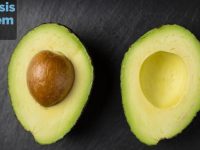I recently came across a column in the American College of Sports Medicine’s news bulletin titled “Active Voice: Protein Supplementation to Enhance Adaptations to Resistance Exercise Training – Not Supported by Scientific Evidence!” In the column, the authors argue that “if a well-balanced diet is consumed, the adaptations of resistance exercise training will not be enhanced by protein/amino acid supplementation.” To back up their claim, they cite two papers they each contributed to: one a large-scale review/meta-analysis of the literature, and the other a study comparing the effects of different types of protein and a placebo on strength and muscle gains.
Of the two references (and the original column), I think the brunt of their argument is backed by the review article, so I’m going to focus the brunt of this discussion on that article. While I do not fully agree with the conclusion Drs. Paul Reidy and Blake B. Rasmussen make, they do raise some interesting points—and in fact, it might be argued that I do in fact broadly support their conclusion, just with some clarification and addenda.
First, however, I want to summarize what I believe are the take-home points in their review.
Protein and Strength: We Don’t Know as Much as We Should, and Our Methods Are Underwhelming
Understanding anything about the human body is a collaboration of studies on both the acute, biochemical mechanism (e.g., muscle protein synthesis in response to training and protein dose) and the chronic, personal adaptations (e.g., long-term changes in strength, fat-free mass, etc.). Within the realm of protein and training, there’s still a lot we don’t know or only “know” based on a few studies (or weak studies), and I think that is the first important point of the review article.
For example, we have fairly reliable evidence that leucine is the amino acid “trigger” that helps turn on or maximize muscle protein synthesis after training. Across a number of studies (1,2,3,4), we have demonstrated that 20 grams of protein is the approximate threshold at which muscle protein synthesis is maximized, and that this dose of protein corresponds to roughly 1.5-2 total grams of leucine. From these studies, we also know that consuming less than this amount will limit the total amount of muscle protein synthesis. Thus, acutely we have good evidence that protein “does something” and that there is dose-response effect as well.
On the other hand, though, it’s immediately clear that the often substantial increase in acute muscle protein synthesis (upwards of 50% when compared to no protein or less protein) does not actually mean substantially greater gains in strength or muscle mass. Without any additional information necessary, this tells us there is some mitigating factor between acute muscle protein synthesis and long-term muscle hypertrophy and strength gain. This mitigating factor could be a cap on the amount of total muscle protein synthesis a muscle fiber can achieve across a longer period of time, or it could be that our muscles adapt to our protein intake and require less to achieve the same effect, or it could be something else entirely. No matter the case, there’s a clear gap between what we see in an acute response and what we see after many weeks.
It’s this lack of translation between acute protein dose and long-term effect that is now creating so much confusion, and the authors are right to bring it up. If we really want to understand how much protein is necessary to get the best results from our training, we need more studies examining the possible causes—but as of now, most studies that do address this question are either weak in power (they don’t have nearly enough participants) or have methods that make it hard to get a good answer (e.g., they don’t measure muscle protein synthesis across numerous weeks of training and protein supplementation, or they compare too similar of protein intakes). As a result, we can only really talk about what happens in either the immediate (acute) timeframe or the long-term timeframe without enough understanding of what happens to that immediate response over the long-term. Obviously, understanding how our muscle response to protein changes over time with continued training and protein intake will make a big impact on our recommendations.
Another large issue the authors bring up is that almost no studies release individual data, opting instead to release only the averages. Statistically, this makes sense as it’s the averages on which you gauge both clinical and statistical significance, but the lack of individual data also means it’s impossible for you or I to examine the rate of “responders” to “non-responders”—in other words, the number of people who gain a large benefit from increasing protein vs. the number of people who gain no or close to no benefit. Again, in aggregate, this may not seem as important as a group average, but it would still be incredibly helpful to be able to look at the results of a study and see that (for example) five people responded really well to protein, two people had no response at all, and that the remaining twenty fell in-between. Or perhaps twenty people responded “normal” and seven had no response, averaging out to appear as only a mild response. Regardless, knowing the response rate would help us estimate the actual prevalence of an effect as well as the expected effect size rather than just whether something just broadly “does something”, and might in the future help us tailor our recommendations better on an individual basis.
So, regardless of the authors’ conclusion about the amount of protein a person needs, it’s clear that more—and more importantly, different types of—data is necessary to make progress.
Is Protein Supplementation Effective?
Let’s return to the original topic of the article now: is protein supplementation effective? The answer—perhaps unsurprisingly—is that it depends completely on how much protein you already consume!
When Reidy and Rasmussen argue that protein supplementation is ineffective, they are not saying protein is ineffective or unnecessary to gain muscle; rather, they’re arguing that most people probably already get enough protein to meet their needs and thus that supplementing—adding protein above and beyond this normal intake—is unnecessary. The amount of protein they argue a person needs is 0.8-1.0 grams per kilogram of bodyweight (Table 5), but they also suggest that this protein should come in doses of 20-30 grams at a time (the amount necessary to safely reach the 2 gram leucine threshold at which muscle protein synthesis is maximized).
Clearly, 0.8-1.0 grams per kilogram is much lower than most common recommendations, which range from 1.2-1.8 grams to sometimes as high as 2-3 grams per kilogram. If the average person weighs around 50-80 kilograms, this is a range of 40-80 grams of protein per day (though in reality it would be slightly different, which I’ll cover a bit later). This range is also lower than the range I personally recommend on this site (80-120 grams per day)—but I think our two recommendations have more in common with each other than they initially appear to (again, more on this later!).
I think it’s this “excessive protein faction” that is the target audience is for Reidy and Rasmussen’s article—people who regularly consume 160 or more grams of protein every day (though I do acknowledge that the authors would likely still find my recommendation “excessive” as well). The evidence that protein is useful in amounts greater than around 1.6 grams per kilogram per day is extremely weak, certainly much weaker than the evidence in favor of consuming 1.2-1.6 grams of protein per kilogram per day. Nonetheless, mega-dosing protein is extremely common and commonly believed to be effective, and Reidy and Rasmussen would like to see this myth die.
They’re not alone, either (though their recommendations are among the lowest); other recent reviews and meta-analyses on protein have come to similar conclusions. Most notable is this meta-analysis (published last month), which found that protein intakes above 1.6 grams per day were likely to be ineffective for most people. If you’re a burly person and weigh 100 kilograms, this means that more than 160 grams per day is almost certainly useless; in reality, it’s probably even less if you weigh that much, as we’ll discuss next.
Basing Protein Intake on Weight Is Probably the Wrong Way to Do It
All of this brings us to one of the main points about protein I routinely make, which is that we’re past the time when we should be recommending protein intake based on an individual’s weight. Not only does this obscure the relatively important effect of dose (remember, even in the case of chronic adaptation, 20-30 gram doses are the most effective), it also gives the wrong impression that bigger people need more protein than smaller people. In fact, when we’re talking about protein in terms of grams per kilogram, the opposite is true: smaller people need more grams of protein per kilogram per day than larger. Let me explain.
If you weigh 50 kilograms, your “effective dose” of protein is still around 20-30 grams. If you eat five protein containing meals in a day, you’ll consume 100-150 grams of protein that day, which is 2-3 grams per kilogram.
If you weigh 100 kilograms, the effective dose is the exact same. If you eat the exact same meals as the 50 kilogram person, you’ll still get 100-150 grams of protein, but for you it’s only 1.0-1.5 grams per kilogram.
In neither case does the effective dose change, nor do other factors related to protein such as the time it takes for muscles to regain sensitivity to protein. We’re not really talking about different people needing different amounts of protein, we’re talking about everyone getting about the same benefit from about the same amount of absolute protein, and the “effective range” only appearing because different people weigh different amounts. This is far from a lone conclusion I’m making, the authors of the meta-analysis I just mentioned have themselves suggested that smaller people may potentially gain more benefit from greater than the recommended 1.6 grams per kilogram (which also implies that bigger people may need less).
That’s why I think using a grams-per-kilogram model is outdated, and frankly confusing. We don’t have any evidence (or at least only scant evidence) that anyone needs any more or any less than 20 grams of high-quality protein per meal to maximally trigger muscle protein synthesis (with 30 grams being a good “safety” to ensure adequacy), so why not ditch the weight-based model and instead focus on how many high-protein meals we need to get the maximum long-term benefit? Not only would this eliminate the confusion surrounding protein dose ranges, it’s also ultimately a lot easier to tell someone “eat four protein-containing meals a day”.
Going back to the 0.8-1.0 grams per kilogram range that Reidy and Rasmussen recommend, we’re looking at a recommended 50-80 grams of protein per day (rather than the initially discussed 40-100). If we turn that absolute recommendation into a meal plan, we’re looking at around three or four protein-containing meals per day—suddenly, their recommendation doesn’t seem so terribly different than other’s or my own, which is to have four to five (but upwards of six) protein-containing meals per day.
Here’s an even simpler way to phrase it: two or fewer protein-containing meals per day is probably inadequate, most people will get near-maximum benefit from three to four protein-containing meals, some people may benefit from five, six is probably the upper-limit of efficacy per day (and only for a small number of “high-responders”).
Protein Is Good, Training Is Necessary
The final thing I’m going to talk about is the effect size of consuming the “right” amount of protein (i.e., enough to get the maximum benefit). Simply put, it’s a lot smaller than you probably imagine. Before protein becomes important, you need to train, and 100% of the extra gains you make by getting your protein intake right (actually, all the gains in general) are directly related to the training you do.
Or: training is both necessary and sufficient to increase muscle mass and strength in adults (assuming an adequate diet), but optimal protein intake is neither sufficient nor is it necessary. If you start training harder and never change your diet you’ll get stronger; if you change your diet but don’t start training, the best that can happen is a bit of fat loss. If you’ve plateaued or are no longer experiencing gains in your climbing or training, it’s possible that changing your diet (such as increasing protein) will help you break through, but changing your training is a much more reliable way to begin improving anew. That being said, changes in diet do impact your training, both in terms of how much you can do and the quality of the results—it just cannot affect your strength or muscle size outside of a training stimulus.
Thankfully, there’s no need to choose one or the other—you can do both, and you can apply as much focus to either as you want or are capable of. In fact, I’ve written an entire article on this topic (“The Sports Nutrition Pyramid“) in which I argue that the biggest change you can make in regards to your performance isn’t timing-related or even protein-related, but rather just getting enough calories. After this point, you get diminishing returns that may or may not be worthwhile depending on your current diet and your goals. Furthermore, if you’re not getting the calories you need to support your training (really, the most basic level of nutrition needed to “support” your training) then you’re not going to get much benefit from protein regardless of how “optimal” it is.
In short, if you want to be a strong climber then training is necessary; protein is just the icing.
Has Anything Changed?
After reading all of this, you might wonder what (if anything) has changed from my base recommendations. Overall, I would say my recommendations are about the same, but perhaps with an additional warning of temperance in expectations.
I don’t think any sports nutritionist or scientist—including Reidy and Rasmussen—would recommend consuming fewer than three protein-containing meals per day, or to count meals with less than around 20 grams of protein as ideal. After this, I don’t know how much consensus you will find, because you’ll certainly still run into well-respected individuals recommending for more.
My own recommendation is to get at least three, preferably four 20-30 gram protein meals in per day (i.e., 80-120 grams of protein per day); this will likely net you 75% or more of the benefits of protein, which given the relatively small size of total effect is pretty good. If you’re motivated, then getting five or six doses of protein per day could potentially have a larger effect, but it’s not guaranteed, it’s only “safe”.
The bottom line is that protein is effective, but it’s not going to double (or even add 10%) to your training gains. Everyone needs to eat, though, so if you can make some small adjustments to your diet and gain even a 2% benefit, that’s probably worthwhile.















May I wish you all the best with the challenges that lie ahead.
I follow your articles with interest and enjoy your explanations as a non scientist and non sports person I keep fit as a by product of enjoying moderat hill walking, cycle touring, yoga and limited sailing and open canoeing. I enjoy a varied and believe moderate western (Scottish) diet.
A couple of things have made me think more about the protein in our diet. I say our as my wife has recently had a hip replacement and is training hard for freedom and we are both now just into our sixties and I believe should perhaps be eating more protein and paying more attention to maintaining our muscles.
I hear what you say about training being more important but how do I check that we are getting enoug of the right sort of protein in our diet. Looking at the details on the food packaging and adding up the stated protein per portion would seem simple enough but it seems there is more to it than that.
Is there a rough method or rule of thumb to calculate tha amount of the right type of protein consumed in a meal or snack?
Thank you.
Lindsay
If you’re looking at food labels, you can definitely total up the protein, but one thing to be aware of with most foods that have labels is that they’re rarely sources of high-quality protein and instead of usually of moderate quality. Quality-wise, the best sources are meat, dairy, eggs, and legumes (and many protein powders, of course); moderate-quality sources can be subbed in, too, you just need a bit more of them. I wrote an entire article about protein quality that would probably answer a lot of your questions, which you can find here!
Amount-wise, 20 grams per meal is really the gold standard, but it does get a bit more complicated after around age 60, when some studies suggest the body’s sensitivity to protein decreases. Not all studies suggest this, though, as factors like diet and exercise can apparently keep the muscles (at least) sensitive. At any rate, if the muscles do lose sensitivity, then around 40 grams per meal has been shown to be enough for a maximum response. I would suspect (especially given the overall lack of research on this topic) that this is the upper limit, and that as you continue to exercise the muscles will regain a lot of sensitivity, so 20-30 grams may still be enough long-term—but I don’t have any evidence to support this, it’s just a suspicion based on everything else we know about protein so far!
Great article. Clear and well laid out. Thanks